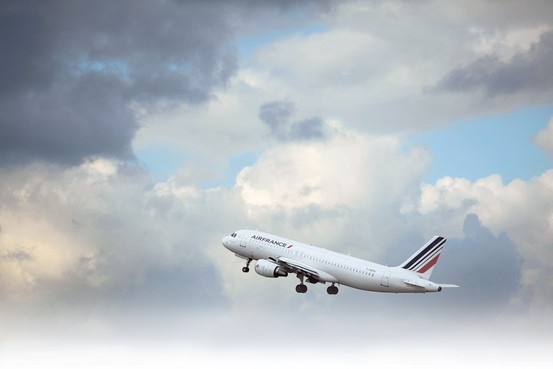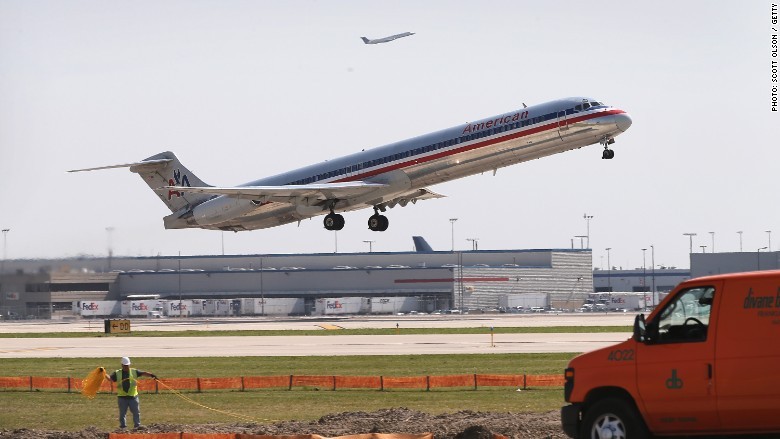Airline Stocks Ready For LiftOff
Post on: 22 Июнь, 2015 No Comment

1. Analyze Fuel Hedging
Some airlines try to pass higher fuel costs on to their customers in the form of a fuel surcharge. But the most efficient way to mitigate fuel costs (particularly over time) is to purchase futures contracts that lock in a company’s fuel supply for the coming year at a set price. (To read more about fuel prices, see “Getting A Grip On The Cost Of Gas” and “Fueling Futures In The Energy Market” .)
To be clear, all airlines do some hedging. But some companies hedge more than others. As such, they are better prepared, should oil prices skyrocket. For example, Southwest Airlines hedged as much as 85% of its annual fuel usage over the past six years. The move effectively locked in consumption at $26 per barrel of oil, which in turn saved shareholders an estimated $1.8 billion (from 1999 to 2005). Conversely, other airlines, such as Alaska Air. hedged a smaller percentage of their expected fuel consumption, and as a result, their annual savings were much less during that same period.
In any case, investors should review the company’s financial statements (Form 10-K / 10-Q ) for information about its hedging activities. While there is no hard and fast rule, investors should look favorably upon companies that hedge at least 30% of their expected annual fuel usage. Anything less than that and the company may be putting itself at significant risk should oil prices really fly.
2. Study Debt Loads
An airline’s ability to make its interest payments and service its debt on a timely basis will determine its fate. So, all investors should conduct a thorough debt analysis. This includes researching not only the total debt the company has on its books, but also at the interest rates the company is paying on those debts. A good way to determine if the interest rate is excessive is to calculate the interest coverage ratio.
To calculate the interest coverage ratio, take the annual EBITDA (earnings before interest, taxes, depreciation and amortization) or the airline’s operating income. and divide it by the annual interest expense. Ideally, to feel comfortable that the company will be able to meet its debt service obligations, an airline’s EBITDA should cover its interest expense by at least two times, but preferably three.
Certainly, companies with less coverage can survive, and they can even thrive when industry conditions are good. But in an industry-wide downturn, companies with less coverage tend to be more susceptible to cash crunches.
3. Revenue Per Available Seat Mile
Revenue per available seat mile (RASM) is a metric that is often used to analyze and compare two or more airlines. RASM tells investors how much revenue the company is generating per seat and per mile flown. Generally speaking, the higher the RASM number, the more profitable the company is, or has the potential to be. All else being equal, an investor should always select the company with the higher RASM for investment.
4. Consider the Value of the Airline’s Hubs
For those unaware, a hub is an airport that services or feeds another destination. For example, Atlanta is a major hub for destinations in New York, Florida and California. It’s a centrally located pit stop where a lot of aircraft fly to pick up customers, refuel and head out to another destination.
Airlines that service the busiest hubs tend to be the most successful. So, investors should look favorably upon companies with a major presence in hubs. Some examples of good hubs are Chicago, Atlanta and Memphis–because they are great feeder airports and because they are centrally located to a variety of destinations.
Incidentally, savvy investors should also be on the lookout for companies that have a presence in up-and-coming hubs. For example, Northwest Airlines services a great deal of flights in and out of the expanding Detroit area. As this city undergoes its rebirth, and its population grows, the number of flights to and from the city is expected to increase. By extension, one could assume Northwest could see a big bump in revenue as well.
5. Consider Labor Relations
Because airlines use unionized labor and are routinely forced to renegotiate salary contracts with pilots, mechanics and a host of other employees, the possibility of a strike is omnipresent. However, as part of the research process, the investor should still make an attempt to gauge the likelihood of a future strike and its potential effect on financial results. (To keep reading on this subject, see “Surveying The Employment Report.” )
Investors should listen to the news and peruse industry trade journals such as Airport World Magazine. Investors should also pay particular attention to any pending negotiations, and specifically to any (union) employee demands for sizable increases in health or wage contributions. Additional information can be gleaned from the airline’s Securities and Exchange Commission filings. In fact, in the 10-K/Q, most airlines include their assessment of the state of current labor relations, as well as information about any future liabilities that could be incurred if negotiations go against the company. All of these sources can be quite helpful. (Find out more about SEC filings in “Where can I find a company’s annual report and its SEC filings?” )
If a strike appears imminent, or there is a very real possibility of a major wage dispute in the not-too-distant future, its makes sense to avoid the stock until the situation clears.
6. Acquisition Opportunities
If a company has deep pockets (meaning it’s flush with cash), or it has the financial ability to take on more debt, it may seek out viable acquisition candidates as a means of growth. Savvy investors would be wise to try to determine the potential cost savings associated with those acquisitions, as well as the ultimate price impact on both the shares of the suitor and the company to be acquired.

For example, consider U.S. Airways’ $8 billion bid for Delta Airlines in December 2006. Analysts and investors were trying to weigh out which stock could benefit the most if a deal were to be hammered out. On the one hand, Delta’s stock could take off, given its low price and lack of other near-term catalysts. On the other hand, some analysts contend that U.S. Airways could realize hundreds of millions of dollars in synergies and pick up assets (like airplanes and facilities) that service several vital hubs on the cheap.
In any case, investors should look favorably upon airlines with the ability to pursue an acquisition strategy. After all, it’s a potential growth outlet that many underfinanced companies simply don’t have. (To find more information about acquisitions, see “The Basics Of Mergers And Acquisitions”. “Mergers And Acquisitions–Another Tool For Traders” and “The Wacky World of M&As” .)
7. Fleet Modernization Costs
In the mid-1990s Continental Airlines spent a bundle of money to refurbish a large portion of its existing aircraft and to purchase more modern planes. Unfortunately, this also proved to be an extremely time-consuming and expensive process that ultimately contributed to a steep decline (about two-thirds) in its share price.
Investors should be aware of the average age of a particular airline’s fleet before investing in the stock, which is also found in the 10K/Q. Some airplanes can stay in service for 20 or even 30 years. But most major airlines undergo a significant modernization every 15 to 20 years just to remain competitive.
Landing the Points
In recent years, companies such as Ryanair and JetBlue have been trimming ticket costs significantly. This has forced other airlines to cut their prices and to issue consumers a variety of other margin -pinching incentives–just to remain competitive.
Put simply, while this price competition might be favorable for the consumer, it can easily put companies with high debt loads and dwindling working capital positions out of business. To be sure, investors can’t prevent discounting. But they should be aware of its existence and its potential impact on the industry. Furthermore, they can avoid companies that are the most susceptible to its effects.
While investments in airlines may not have been considered attractive in recent years, realize that money can still be made in airline stocks. By using these seven tips, investors can be aware of what to look for to keep their money from falling out of the sky.
Send comments and questions to newsletters@forbes.com .














